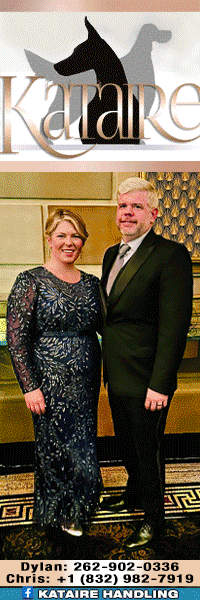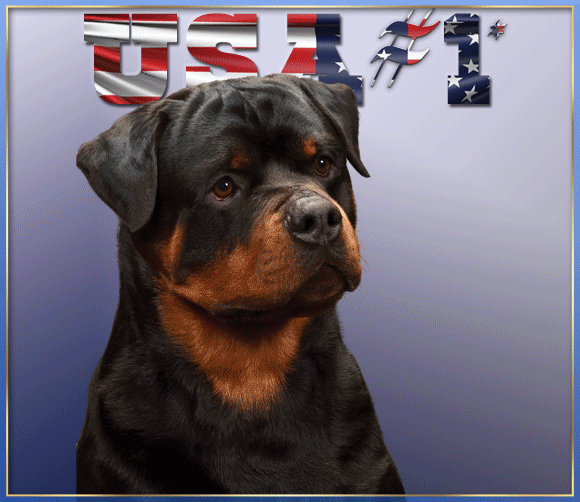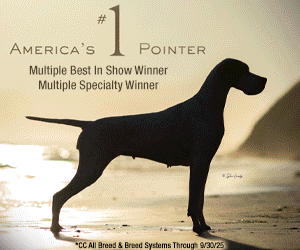Is One Judge Enough?
This column was published in January, 2005. I thought it might be appropriate to republish it now as I feel it as it is an issue that warrants further discussion. This might be the perfect time to consider major changes to the way we judge our most important dog shows.
I am writing about the need for a multiple-judge panel at the AKC National Championship. I write this column not for the exhibitors. No, nearly all of the exhibitors I talk to love the idea of having a five-judge panel at the group and Best in Show level. I write this column for the decision makers at AKC. I know it will probably fall on deaf ears, but like Don Quixote railing at the windmills, I persevere, knowing I am right and this is what we need.
Let me give you a synopsis of how a five-judge panel works. I have participated in this type of judging at all of the major horse shows and I understand that similar methods are used at most major stock shows. The five judges that will adjudicate the selected class are chosen from a pool of eligible judges on the panel for the event. Consequently, if the Working group were to be judged at the AKC National Championship, the five judges would be selected from those on the panel who are eligible to oversee the Working group. In a perfect world, their names would be drawn from a hat about 15 minutes prior to the group being judged. Exhibitors would not know who the judges were until they entered the ring. A judge would not know who he or she is in the finals with until entering the ring with the other four.
Upon entering the ring, the judges would be spaced at regular intervals and the dogs would travel in a serpentine pattern gaiting toward the judge (to see front movement) and then by and away from the judge (to see rear movement). After all of the eligible entrants completed this pattern, they would then make a circle around the ring to exhibit their side movement. Each dog would then take its place next to the sign designating its breed. The five judges would fan out and each would go over every dog with none inspecting the same dog at the same time. Upon completing their inspections, the dogs would make one more trip, individually, around the ring to exhibit their side movement again. The judges would then place the top ten dogs in the group (or 1-7 for Best in Show). They would not be allowed to converse during the judging process. Once their cards are marked and handed over to the steward, the real fun begins. The markings for each dog would be tabulated. Each dog would have their highest and lowest score thrown out and would keep the middle three. For instance, if your dog had a 1st, a 2nd, a 5th, an 8th and a gate, your 1st and gate would be thrown out and you would keep the 2nd, 5th and 8th placements. Point totals would be assigned to each placement and the final point total would determine your placement in the group. The first judge (call him or her “Judge A”) would be assigned a spot in the ring and the announcer would call out that particular judge’s placements – 1 through 10. The exhibits called out would line up in front of the judge in order of placement. This procedure would continue through judges B, C, D, and E. Well, as you can imagine, the crowd gets a pretty good idea of who is in contention by the time the third judge’s placements have been announced and they will most certainly cheer for their favorites. When the final judge’s placements are announced, the top four are announced in reverse order, sort of like a beauty pageant. It is extremely exciting.
Those against this system of judging claim that it confuses people because this is not how we judge regular dog shows. They also claim that it suggests that we don’t trust our judges and the system. What a bunch of hot air! First of all, the AKC National Championship is not a regular dog show, it’s our NATIONAL CHAMPIONSHIP! By implementing such a system for this show, we are underscoring its importance as the pinnacle of dog shows. If it is to truly be a National Championship and hopefully include the best dogs our country has to offer, wouldn’t logic follow that the only way to get all of the great dogs to show up is to ensure a level playing field for them? I don’t know about you, but I would not bring my best dog to a show knowing that the judge didn’t like him or her in the first place. If someone is judging the group who has made it clear they don’t like my exhibit, I’m not coming, plain and simple. However, if I know that I have five judges to work with and even if I get one that doesn’t like my dog, that score won’t count, I am coming.
It’s time to look to the future. There is a lot on the line at this show – money, prestige and glory. Isn’t it time we treated it with the respect it deserves?
Short URL: http://caninechronicle.com/?p=185474
Comments are closed













